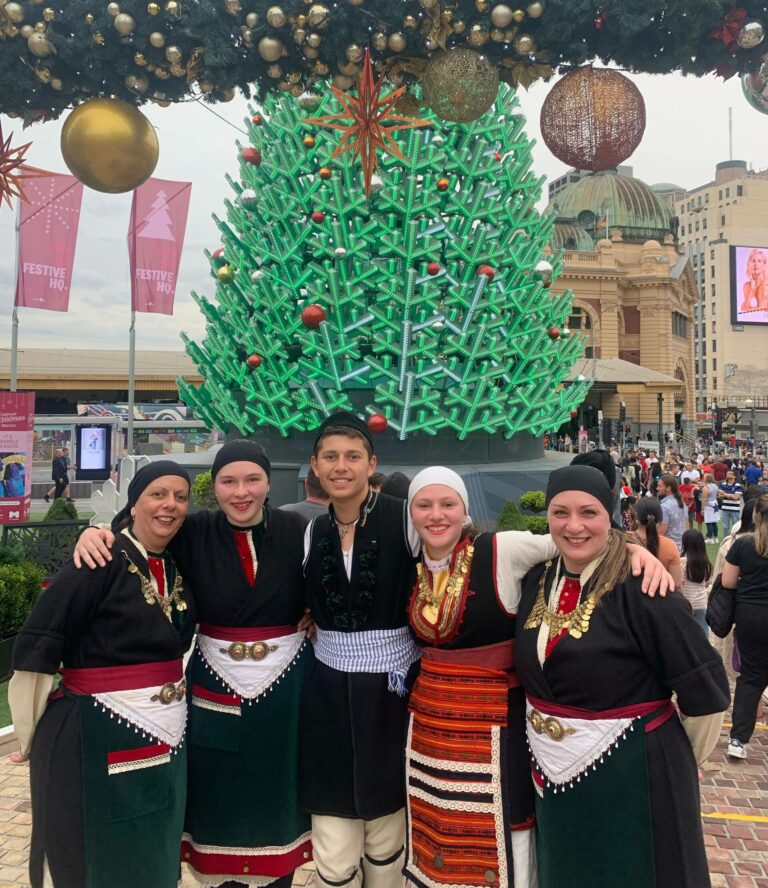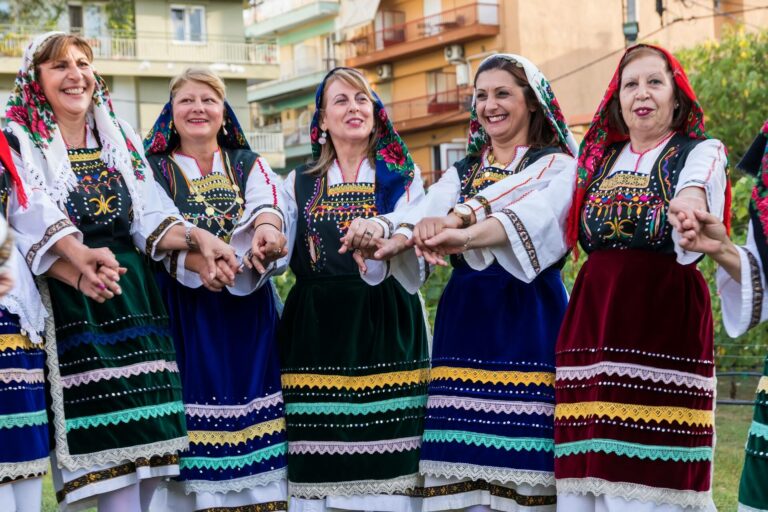For Greeks dance since ancient times been a core expression of identity. Plato wrote “the dance, of all the arts, is the one that most influences the soul. Dancing is divine in its nature and is the gift of the gods.”
It’s no surprise our ancestors incorporated the artform into many facets of their lives. From coming of age ceremonies to the rituals surrounding marriage, war and death; communal and individual dances would mark not only important times of year but were also an integral component of social events.
American academic Lillian B. Lawler noted in an article published in the March 1947 edition of The Classical Journal’:
“Dances ultimately mirrored all of Greek life, Greek thought and the Greek disposition; and to study the progress of the Greek dance is, in a sense to study the Greeks themselves.”
She writes that music, poetry and dance were the inalienable parts of a whole, a thing called “mousiké” or the Art of the Muses; those goddesses of myth purported to inspire mortals to great accomplishments upon their invocation.

Andy Miller, CEO of Multicultural Arts Victoria (MAV) says that the importance of dance for newly arrived migrant communities can’t be overstated.
“As a form of social heritage, it’s also a means of transaction for these communities when they arrive. It’s part of the bedrock that allows them to share their culture with the broader community of their new home,” he says.
“And it’s absolutely critical, MAV’s seen that first hand with migrants who’ve arrived more recently, whether it be people from Africa or South Asia, dance and song is often a core part of their identity, so being able to share those things and keep them alive.”
From the region-specific forms of the Pontic and Cappadocian Greeks to the Pan-Hellenic styles of the Kalamatiano and Hasapiko, for more than 100 generations people across the Hellenic world have joined hands in these rituals which have stood the test of time; even as the cultures which spawned them evolved with the changing world.
Andrea Zorbas, a 21-year-old third generation Greek-Australian, has been dancing since she was six years old.

“It’s the “parea” that draws me, being able to connect with people in the group. But it’s also the perfect mix, it’s my exercise and my culture all in one. I think people should know that it’s a lot more accessible than they might think.”
She’s spent time performing with a number of Greek dance groups, from the “Aristotelis” to “O Periklis” and “Pontiaki Estia”.
“That stress they might have that it’s hard to start without knowing where to begin, once they come along they’ll see the community is all about helping each other.”
Second generation Penny Avlonitis recently returned to the world of Greek dance after a 30-year hiatus.
“I danced for many, many years when I was younger. Coming back now after stopping in my mid 20’s, I’ve rediscovered my passion. It’s something I love, it’s my culture, it makes me feel alive,” she says.
“You make amazing friends, and reconnect with old ones. It just brings out something within me I can’t quite put it into words. Now I’ve got the opportunity to share it with my son, and seeing him thrive through music and dance, it’s beautiful.”

Our folk dance has spread with the diaspora, visit cities in the world round and you’re sure to find at least one society dedicated to the preservation and performance of these art forms.
Jorge Menidis, Director of the Antipodes Festival thinks Greek dance will only become a greater cultural link for those with Hellenic heritage.
Greek folk dance, especially in the context of the diaspora, fits neatly into the performing arts domain outlined in the UNESCO convention on Intangible Cultural Heritage.
According to the convention, intangible cultural heritage can only be such when:
“it is recognized as such by the communities, groups or individuals that create, maintain and transmit it – without their recognition, nobody else can decide for them that a given expression or practice is their heritage.”
Menidis alludes to the importance of this intangible cultural heritage when he says that “our coming generations are becoming less monocultural, for our fourth and fifth generation Greek-Australians dance will be incredibly important.”
As for Antipodes, it’s a core reason for the festival’s existence, it thrives thanks to the Greek dance groups.
“It’s a big part of how we can put on three stages with over 70 hours of entertainment.”
“As a social activity, it allows people to come together and share, and it’s far more accessible than language. It’s an artform that embraces you no matter who you are, stand by the sidelines for long enough, someone will take you by the hand and show you where to start,” Menidis says.
Even among those without any formal training or special interest, the traditional phenomenon of “opening a dance” at social occasions such as weddings and birthdays is well known.
Countless among us will have at some point in their lives, been taken by the hand of an elder aunt or some other sentimental relative, ushered towards the breach to demonstrate our often-dismal renditions.

The significance of our cultural dances is great, as are the performers and practitioners who dedicate their free time to the perfection of forms and memorisation of steps.
“Some kids just connect with it, they hear a tune or dance a step and just embrace it,” says George Kiriakidis, a dance instructor and cultural co-coordinator at The Cultural Centre of Florinian’s “Aristotelis”.
“As a teacher you can tell which ones are going through the motions versus those that are really making that connection, it’s not just physical, it’s almost spiritual.”
He says that after the height of COVID, the need for face to face interaction has been a driving force behind youth taking an interest in the art.
“Not only does it allow you to form social relationships, but it’s an outlet for expression… and the younger people can show off a bit and get to know each other. As with folk dances around the world, it’s about the need for connection,” he says.
“It’s that real human exchange that we’ve been accustomed to for thousands of years. Sometimes I think it’s in the DNA, we’re doing these dances our ancestors had done for who knows how long… we’re literally following in their footsteps.”
George says that at times the blending of Greek music and dance can be almost transcendental, “as a kid I remember listening to specific pieces and being instantly enthralled, I could feel the music.”
After all, the time signatures and movements are often bewildering to the outside observer, the parameters for variation and improvisation not something which can be easily taught, but rather must be learnt through practice.
“In the past it seemed like there was a bit of a stigma surrounding it for the Greeks who came to Australia, it was like it had an association with the poverty of the past which so many first-generation migrants fled,” he recalls.
This complexity is a testament to the storied history of Greek dance, one which runs parallel to Greek history as a whole.
Millennia of development have culminated in the styles we see today.
To cast them to the wayside as simply a remnant of rural life would be a mistake, as on closer inspection they, along with our language, are among the greatest extant examples of our enduring history.

Neos Kosmos invites the members of Australia’s Greek community and myriad dance societies to contact us and share their experiences for an upcoming piece on the state of Greek dance today and the torchbearers who keep it alive.
Share your stories with us at thomas@neoskosmos.com.au or editor@neoskosmos.com.au